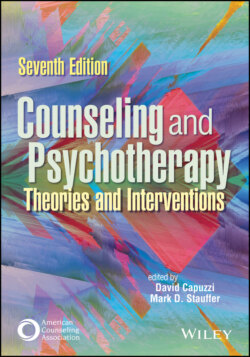Читать книгу Counseling and Psychotherapy - Группа авторов - Страница 134
Techniques and Interventions Therapeutic Immediacy
ОглавлениеTransference and resistance are two fundamental aspects of traditional psychoanalytic theory. Once the source of transference is identified, the counselor engages the client in exposing the unconscious motivation behind the individual’s defense mechanisms by welcoming all transferred attitudes, feelings, impulses, and desires that were generated in early life by adults whom the client considers important (Thomas, 2008). In addition to analyzing transference, the counselor also analyzes the resistances observed from the client during sessions with the intent to expose, or bring into consciousness, the underlying causes for those resistances. Resistance is interpreted as an instinctual reaction to uncomfortable situations that clients attempt to keep hidden from themselves and the counselor (Weiss, 2014).
In modern psychodynamic theory, counselors use therapeutic immediacy to address transference and resistance within the therapeutic relationship (Luyten et al., 2015). Therapeutic immediacy involves any discussion in the therapy session about the relationship between counselor and client that occurs in the here and now, and it processes what is occurring in the here-and-now client-counselor relationship. Examples of therapeutic immediacy include exploring parallels between external relationships and the therapeutic relationship; expressing in-session emotional reactions; inquiring about the client’s reactions to therapy; exploring the counselor’s comments on the client; supporting, affirming, and validating the client’s feelings in the therapeutic relationship; and expressing gratitude (Luyten et al., 2015). Ultimately, the counselor uses therapeutic immediacy to work on improving interpersonal functioning and to create a corrective emotional experience in the here and now (Luyten et al., 2015).
